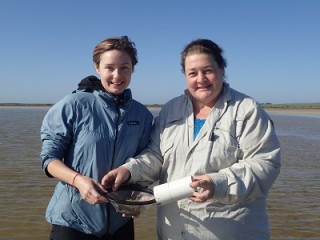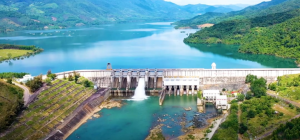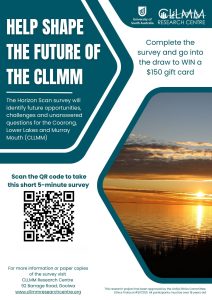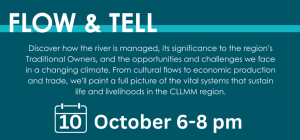
Blue carbon ecosystems like seagrasses, mangroves and tidal saltmarshes have exceptional capacity to sequester carbon dioxide. Compared to many terrestrial forests, these coastal vegetation communities can accumulate carbon at faster rates and store it for longer periods, making them an important tool to combat climate change.
The Goyder Institute for Water Research’s Coastal Carbon Opportunities project is among the first to research the potential for coastal systems to help mitigate climate change in South Australia, investigating the potential of South Australian coastal ecosystems to sequester and store carbon.
The two-year project, led by The University of Adelaide, in collaboration with Edith Cowan University, SA Water, SA EPA, and CSIRO, has produced a series of technical and summary reports covering: the impact of degradation on carbon storage and accumulation rates at three case study sites; changes in the distribution of mangrove and saltmarsh across South Australia (1987 – 2015); ecosystem services provided by blue carbon habitats; using drones to measure mangrove above-ground biomass; and vegetation dynamics at Mutton Cove (a site of tidal reconnection) .
“There’s over a million hectares of seagrass in the state. That ecosystem holds a lot of carbon, and it’s constantly sequestering more carbon every year,” said Dr Alice Jones, Research Associate, The University of Adelaide.
“For the area that they cover they punch above their weight in terms of the amount of carbon that’s stored compared to terrestrial ecosystems,” said Dr Jones.
“Most of the blue carbon values used in the past have been based on tropical coastal ecosystems, so one of our main goals was to get baseline information about blue carbon in South Australia,” said Dr Jones.
The team estimated that South Australia holds around 1.12 million hectares of blue carbon ecosystems, which is as much as 10% of the blue carbon habitat of all of Australia. Blue carbon habitats in South Australia contained about 5% (up to 76 Mt) of the nation’s soil organic carbon stocks, of which about 90% is in seagrass ecosystems. South Australian blue carbon ecosystems sequester 0.11–0.14 Tg Corg y-1 .
The Coastal Carbon Opportunities project provided critical knowledge for the State Government’s Blue Carbon Strategy, recently released by Hon Minister Speirs MP (Minster for Environment and Water), by filling key knowledge gaps and drawing on team members’ expertise on its technical reference panel. They have also contributed to a Blue Carbon Research Projects Synthesis Report and Research agenda for blue carbon in South Australia in partnership with colleagues from the Institute’s Salt to C research project, led by Professor Sabine Dittmann at Flinders University. The research agenda outlines the way forward for blue carbon research in SA as well as opportunities to increase carbon sequestration, potentially with options for carbon crediting.
As well as collecting baseline blue carbon information, the team looked at the effects of human coastal activity on carbon sequestration in seagrass and mangrove/saltmarsh environments.
“We found that the impacted sites had at least two times less carbon than the unimpacted sites,” said Dr Jones, “that information’s helping us understand what the implications are in terms of carbon release when there’s coastal development or changed tidal flow.”
Through the project the team also developed new techniques to measure above-ground mangrove biomass using drones and investigated the value of the ecosystem services that blue carbon habitats provide.
Habitat protection and restoration can increase the carbon sink value of coastal environments, as well as enhance the many other ecosystem services they provide. Highlighting these opportunities in South Australia could be a vital element in remediating coastal vegetation communities and increasing the carbon sequestration and storage capacity of mangrove and saltmarsh ecosystems throughout the state.
You can read more about the project’s research findings below and in the project reports or contact Dr Alice Jones for more information. You can also keep up-to-date with the team’s progress on twitter (@CoastalCarbonSA) or through their project website.
Carbon storage and accumulation rates
The team sampled blue carbon ecosystems in Adelaide coastal waters, Port Broughton, Port Pirie, Port Augusta and Whyalla to obtain initial baseline estimates of the variability in stocks and accumulation rates within and between the different coastal carbon habitats. They found that the seagrass carbon accumulation rate (10.1 Corg m-2 y-1) is significantly lower than tidal marshes (31.1 Corg m-2 y-1) and mangroves (38.8 g Corg m-2 y-1) but that seagrasses account for about 85% of SA’s annual blue carbon sequestration due to their large area (with tidal marshes and mangroves each contributing about 5–10% to annual SA blue carbon sequestration).
The team compared carbon stocks and accumulation rates at disturbed and undisturbed seagrass and mangrove sites and found that historical disturbance reduced their blue carbon stocks and accumulation rates. This suggests that carbon sequestration can be enhanced through ecosystem restoration, and that conservation of these ecosystems will both maintain sequestration and avoid emissions.
Mangrove and saltmarsh distribution (1987 – 2015)
Researchers used Land Cover Layers to estimate the area covered by mangroves (164.2 km2) and tidally-influenced salt marshes (197.6 km2) in 2015 and found relatively small net increases in both ecosystems since 1987. There was a small reduction in the area of saltmarsh between 2005 and 2010 and in the area of mangroves between 2010 and 2015.
The researchers also investigated uncertainty in these area change estimates by comparing mangrove and saltmarsh area estimates and patterns of change from the Land Cover Layers with aerial photographs at Torrens Island and Middle Beach. The aerial photography estimates for both mangrove and saltmarsh appeared to better represent the actual spatial coverage and changes over time. The Land Cover Layers dataset was still the best available state-wide mapping product to use for baseline carbon stock assessment and to identify broad scale gains and losses in saltmarsh and mangrove ecosystems. The findings suggest a multi scale approach is required to accurately estimate blue carbon habitats going forward, which involves further external validation of the Land Cover Layers classification of saltmarsh and mangrove.
Vegetation dynamics at Mutton Cove
Mutton Cove, the last remnant area of saltmarsh and mangrove on the Le Fevre Peninsula, was enclosed by a seawall in the early 1970s and cut off from tidal influence. Consequently, most of the mangroves inside the seawall died-off due to disconnection from tidal flow and only patchy stranded saltmarshes remained. In the early 2000s a restoration program began, to allow controlled tidal flow back into the site and after 10 years the site was restored to a mixture of low and mid saltmarsh communities, with mangroves along the creek edges. In mid-2016 the seawall was breached and the site has since experienced increasing and uncontrolled tidal inundation. Researchers used Mutton Cove as a case study to demonstrate the impact of degradation, restoration and re-introduction of tidal flows into a tidally-restricted saltmarsh area.
Aerial images (dating back to the 1940s), on-ground surveys, physical data collection, and drone-based remote sensing were used to monitor changes at the site. The team found that the building of the seawall and subsequent site degradation led to a significant decrease in sediment carbon stocks and sequestration rates. Since the breach, there has been significant die-off of saltmarsh, especially in lower lying parts of the site, but there has been an increase in the area of mangroves across the site, including lots of mangrove seedlings.
This indicates that in time, with the new tidal regime at the site, the vegetation may eventually return to the mangrove-dominated system that was present prior to the seawall being built in the 1970s.
Using drones to measure mangrove above-ground biomass
The proof-of-concept case study tested a new method for remotely estimating above-ground biomass and carbon stored in mangroves using drones. Drones have the potential to provide a relatively low-cost, low-risk and quick approach to surveying mangrove above-ground biomass when compared to on-the-ground forestry methods that involve physically measuring trees.
The team found that the drone-based imagery can provide very accurate estimates of tree height, but overall tree biomass estimation was better (had lower prediction errors) when they used techniques that rely on taking direct measurements of structural characteristics from the trees in the field. However, with further testing and model development, they aim to improve the accuracy of the drone-based method in order to provide robust estimates of mangrove above-ground biomass.
This study produced a new equation that improves estimates of above-ground mangrove biomass for South Australian Avicennia marina magrove trees compared to other published equations and should be used for future estimation of above-ground biomass in South Australian mangroves.
Ecosystem services provided by blue carbon habitats
Blue carbon habitats provide a wide range of ecosystem services – the benefits provided to humans by ecosystems. Blue carbon habitats provide important ecosystem services including, transport and water supply; recreation and tourism; erosion control; nursery and habitat for fishes, birds and other species; and cultural heritage. The researchers conducted a review to help determine the potential value of co-benefits provided by coastal carbon ecosystems in South Australia.
There was a significant lack of information that clearly linked ecosystem services to monetary or societal values in the South Australian context. The researchers identified the knowledge gaps that currently prevent a complete ecosystem services valuation and analysis. They recommended using case studies in the first instance to clearly demonstrate the value (economic and social) of blue carbon ecosystems and examine the link between ecosystem condition and the ability to provide ecosystem services.


